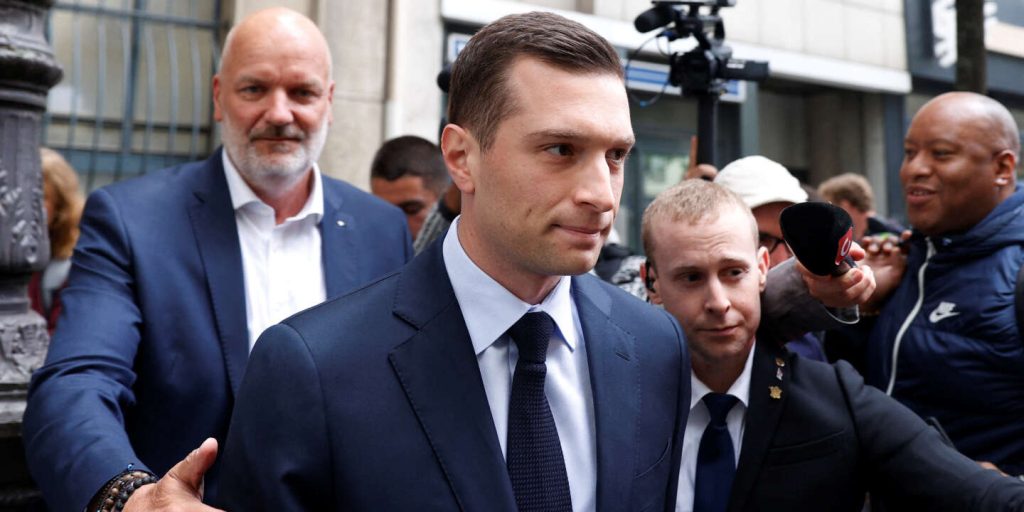Thousands of people have once again taken to the streets in cities like Rennes and Orléans to protest against the far-right National Rally party (RN) and to express their rejection of the party potentially leading the government in case of victory in the legislative elections. In Rennes, around 6,000 protesters marched, organized by a coalition of unions, denouncing attacks on public services and the spread of extreme right-wing ideas due to economic struggles. The historical enmity towards far-right parties was emphasized, with a union representative highlighting their collaborationist past in the 1940s and their exploitation of poverty and precarity.
The march in Rennes was joined by many young individuals, including students and high school students, alongside veteran activists from various unions. The demonstration proceeded peacefully, although a group of around thirty far-left activists used the opportunity to vandalize an ATM and signs, resulting in three arrests by the authorities. In Orléans, a thousand protestors from different left-wing parties and organizations, carrying flags from France Insoumise, UNEF, and Palestine, gathered to show their opposition to the RN and their support for progressive politics.
In addition to the protests in Rennes and Orléans, similar demonstrations were taking place in other cities, including Paris, where a gathering dubbed “La Jeunesse emmerde le Front national” (“Youth Annoys the National Front”) was being held for the third consecutive evening. Organized by multiple left-wing organizations, such as student and youth unions, the protests aimed to underscore the youth’s resistance to the far-right ideology and their commitment to social justice. Prominent figures from leftist parties, like Deputy Louis Boyard of France Insoumise, participated in the demonstrations.
The mobilization against the RN and far-right ideas reflected a broader concern among the population about the rise of extremism and the potential impact on social services, employment, and overall quality of life. The protests served as a platform for different groups and individuals to come together in solidarity against intolerance and discrimination, reaffirming their commitment to democratic values and equality. The presence of young people in the protests highlighted the growing awareness and engagement of the youth in political and social issues, seeking to shape a more inclusive and progressive future.
While the demonstrations were largely peaceful and focused on expressing dissent against the far-right, instances of vandalism by a small group of individuals were reported, leading to arrests by authorities. The actions of these few individuals were condemned by organizers and participants, emphasizing the importance of peaceful protest and constructive dialogue in advancing social change. Overall, the protests demonstrated a united front against the RN and far-right ideologies, emphasizing the importance of grassroots mobilization and collective action in safeguarding democratic principles and promoting social justice. With ongoing protests and mobilization efforts, the movement against the far-right continued to gather momentum, shaping the political landscape and fostering a culture of resistance and solidarity among diverse communities.


